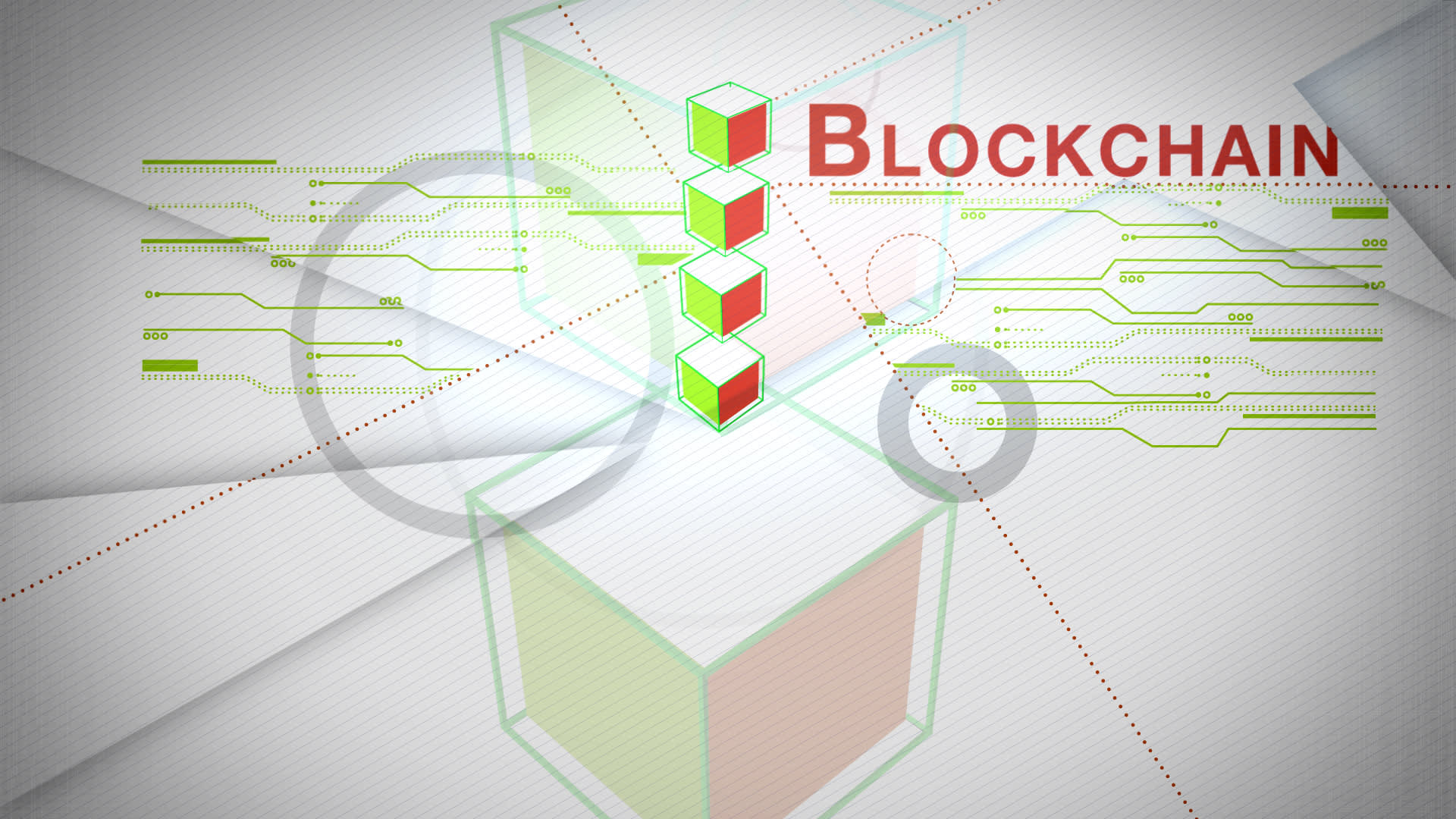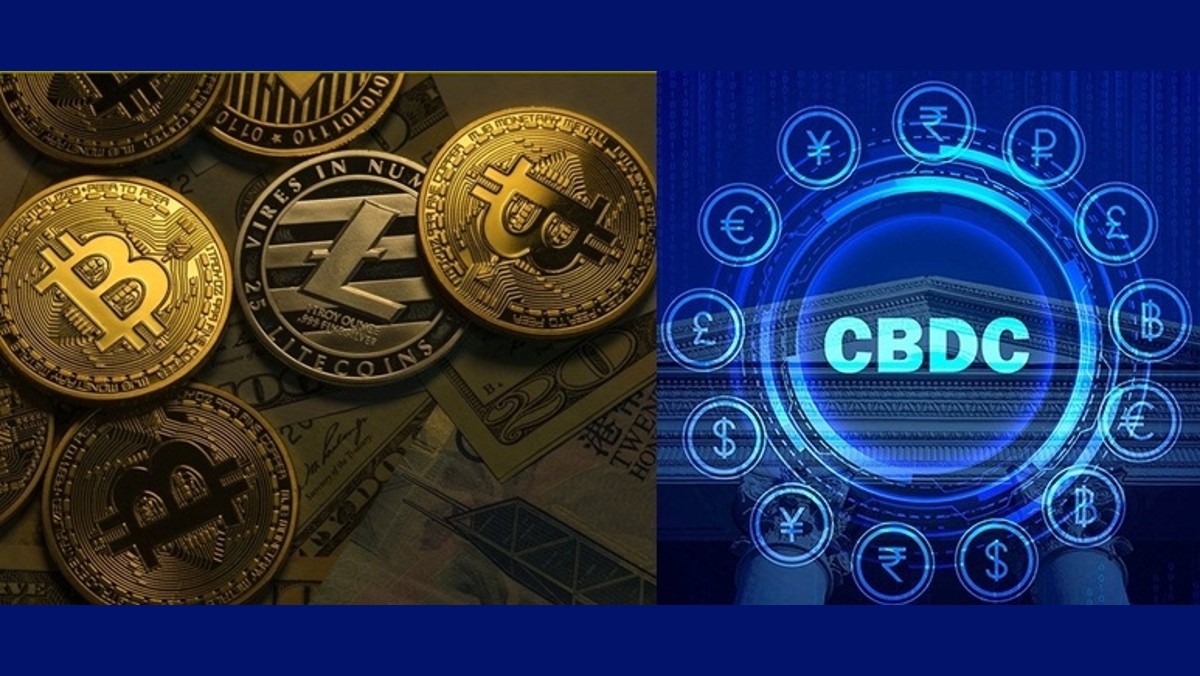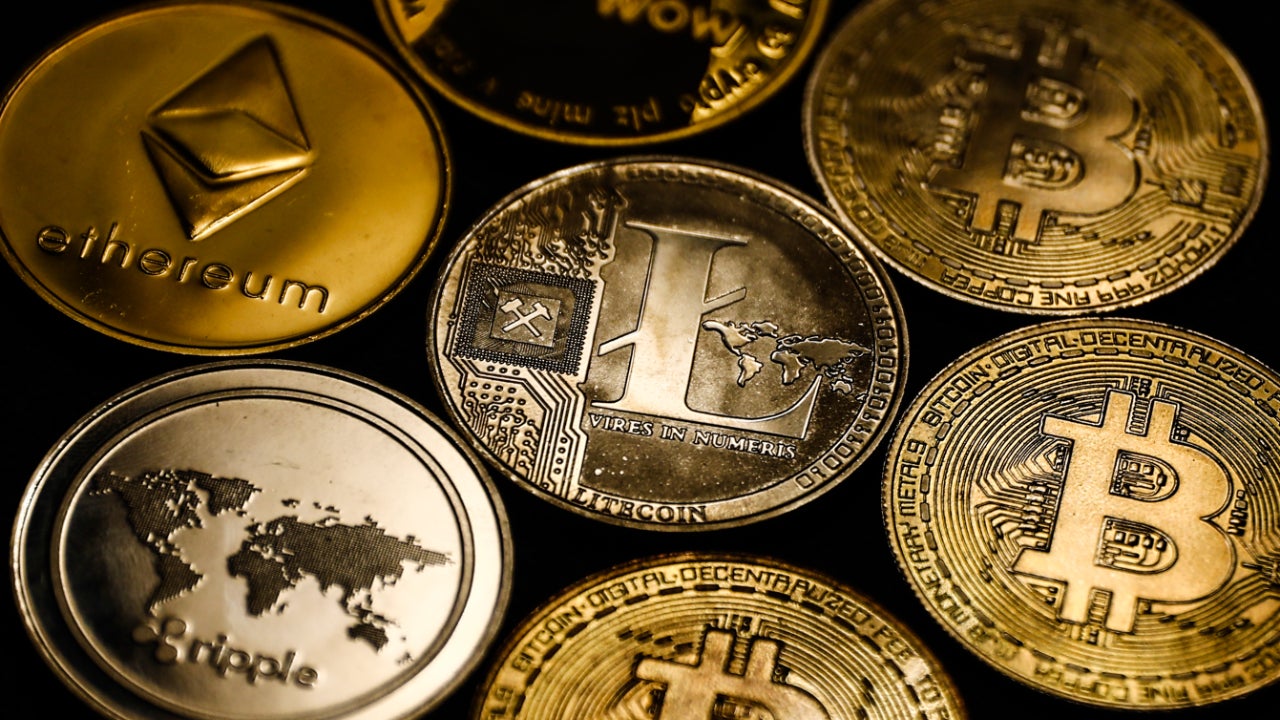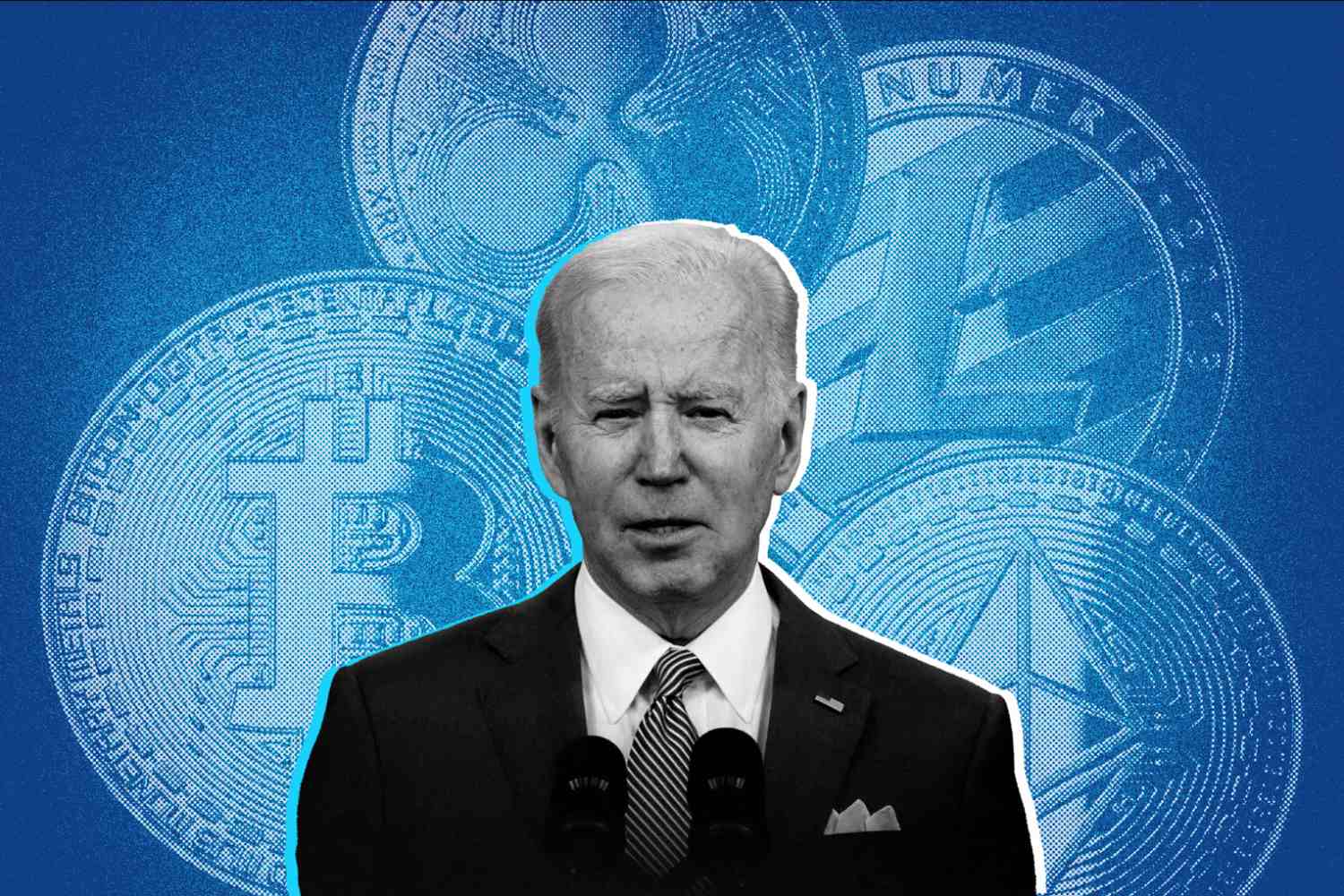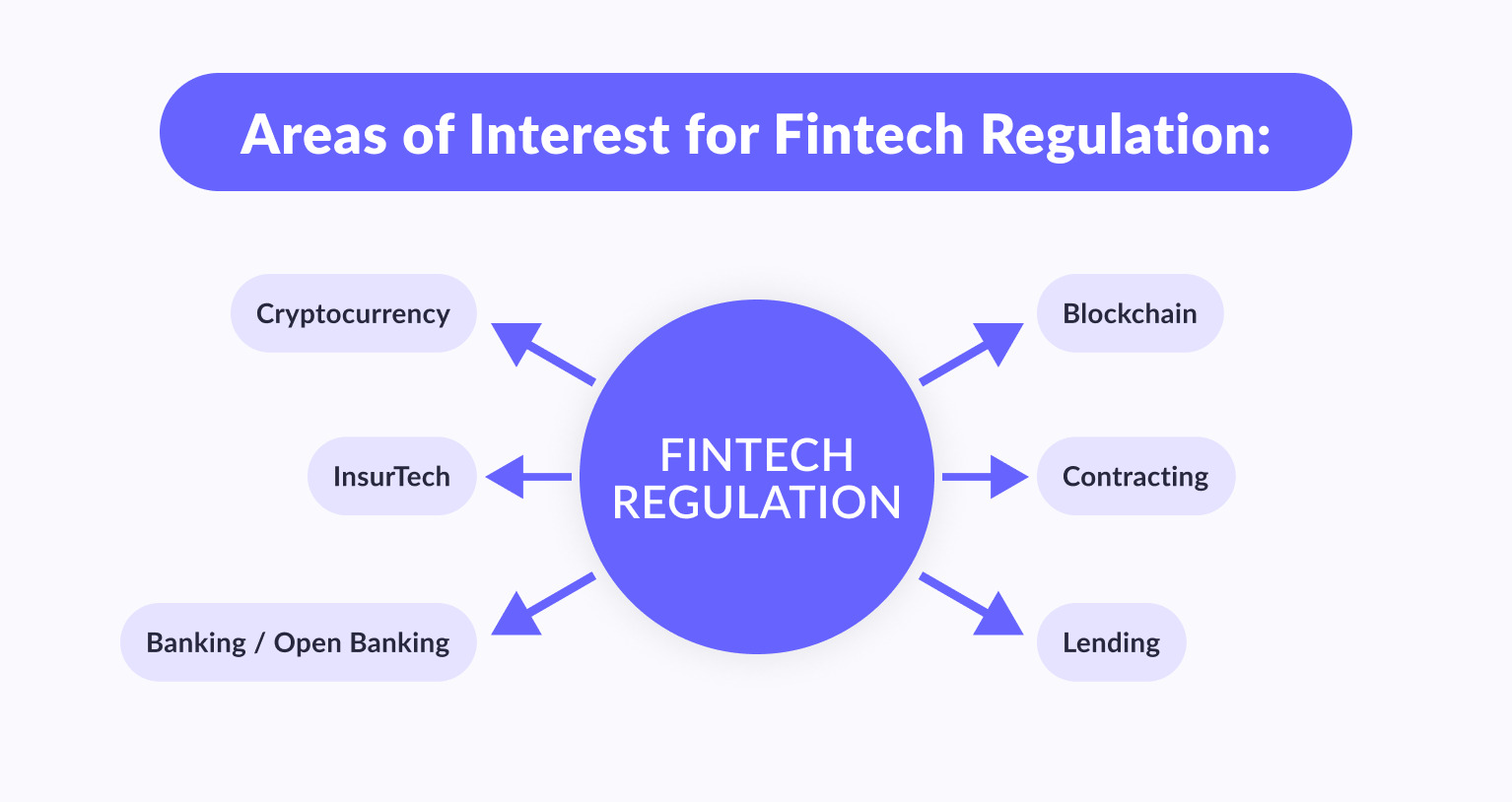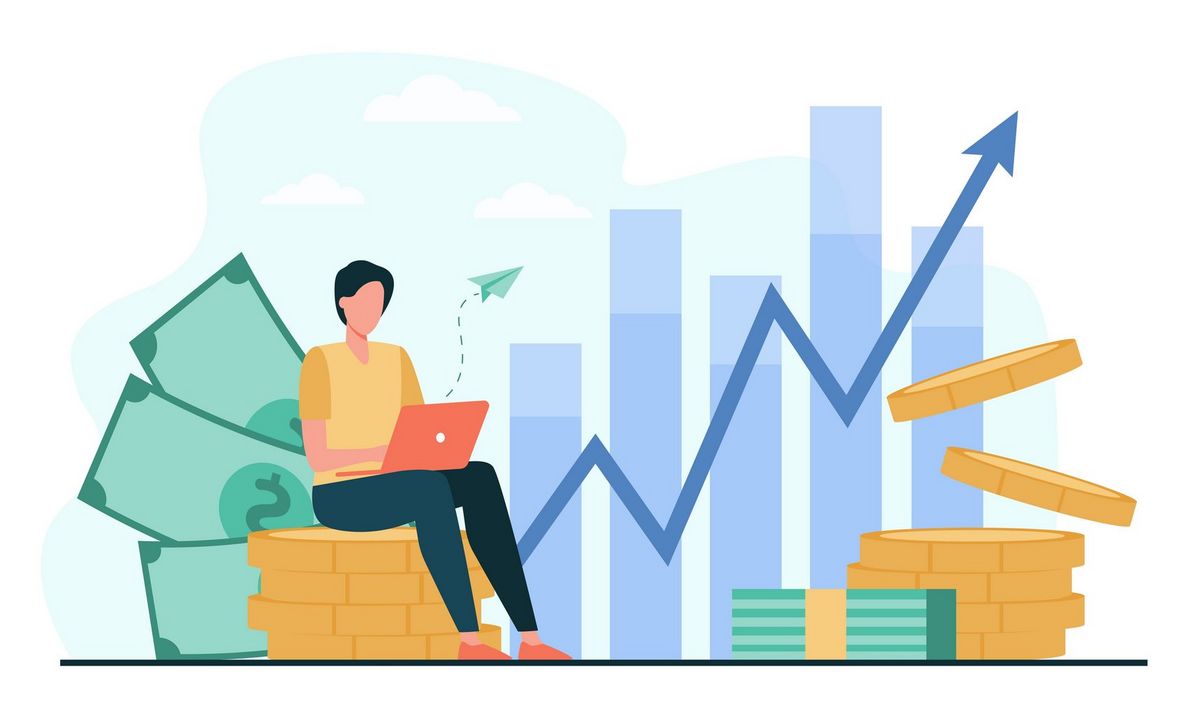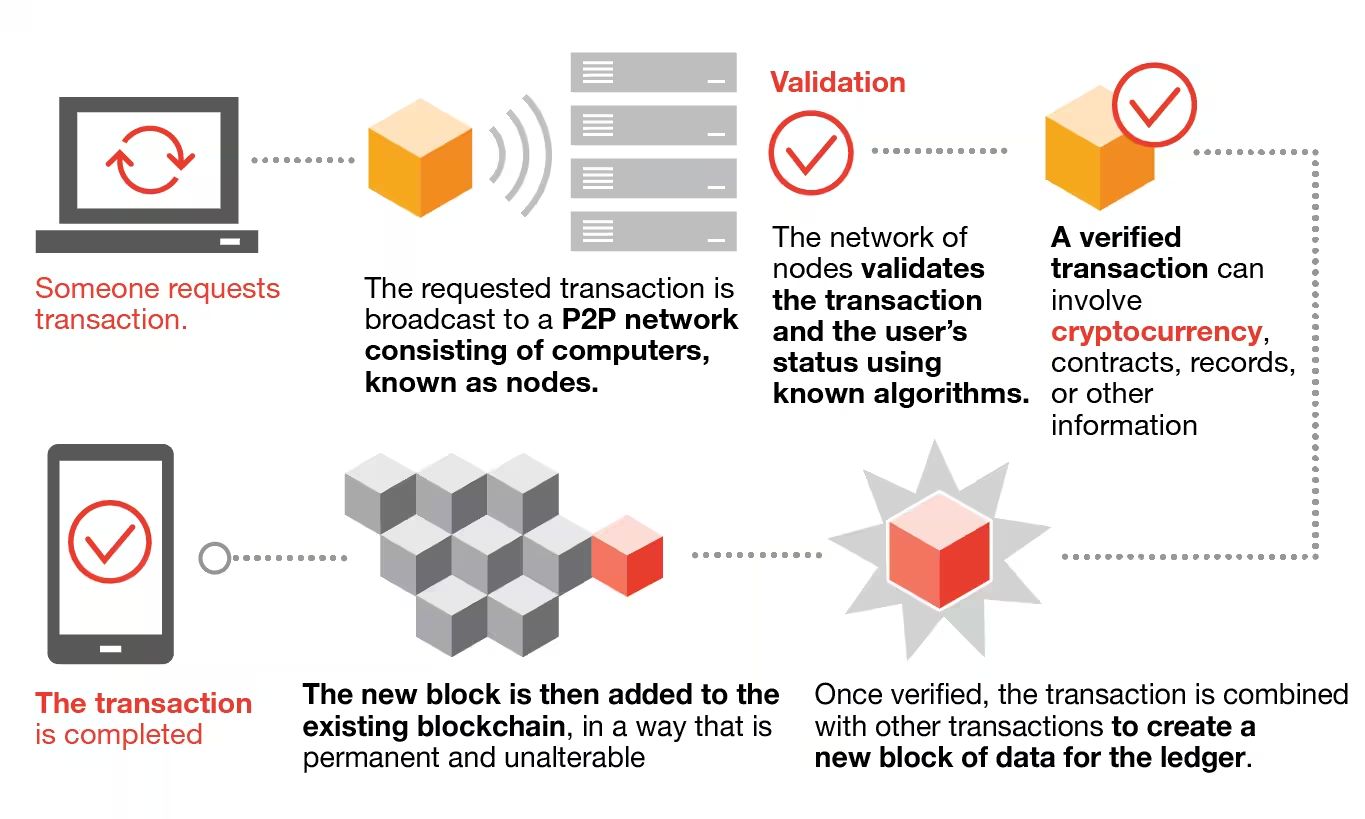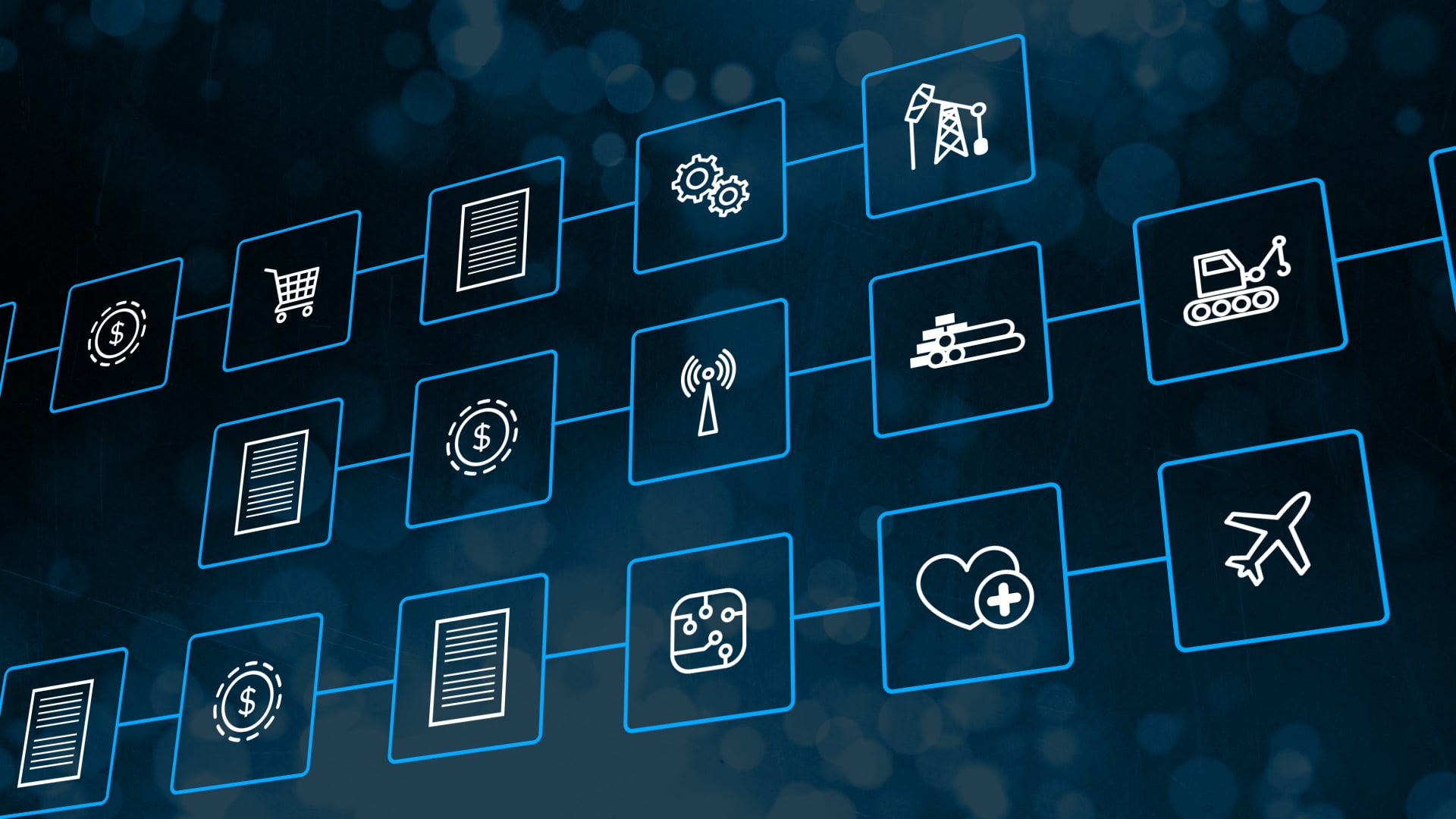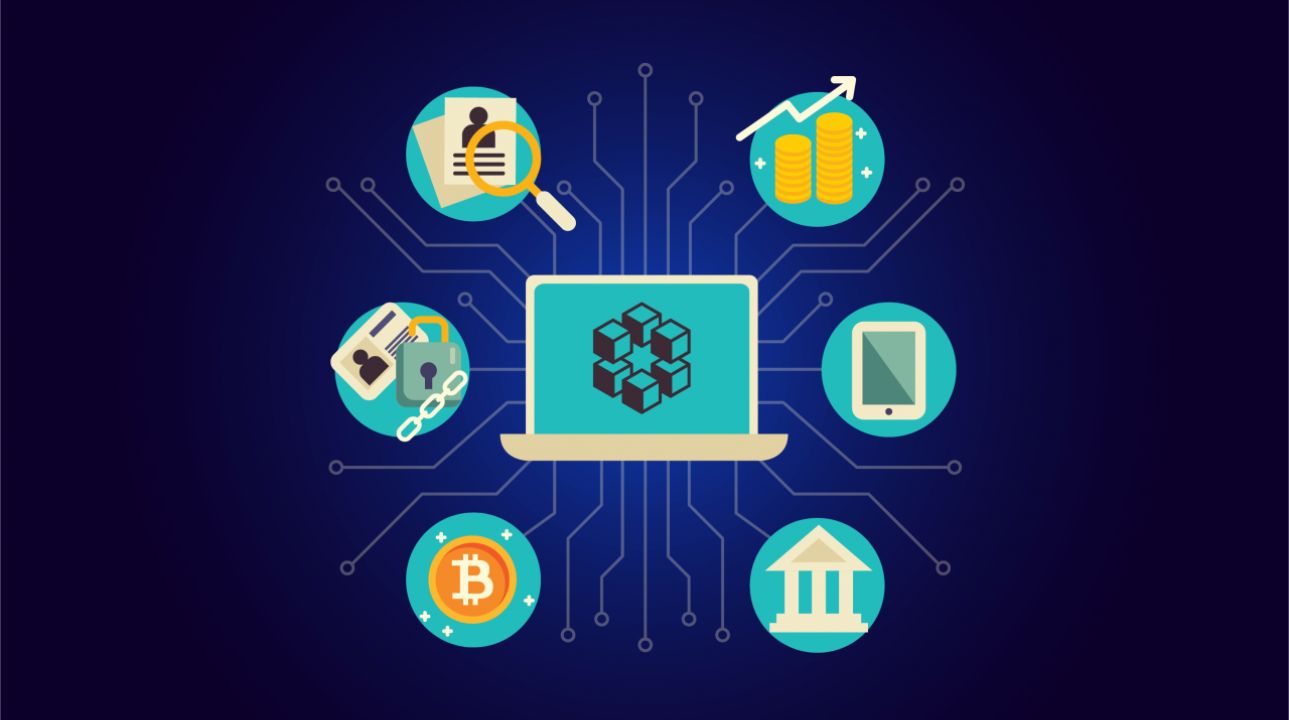Introduction
As society becomes increasingly digital, innovative technologies are transforming various industries. One such technology that has gained significant attention is blockchain. Originally introduced as the underlying technology for cryptocurrencies like Bitcoin, blockchain has evolved into a powerful tool with applications far beyond the realm of digital currency.
At its core, blockchain is a distributed and decentralized electronic ledger that allows for secure and transparent transactions. It enables trust and accountability by eliminating the need for intermediaries and providing a tamper-proof record of all transactions. But who is responsible for overseeing this revolutionary technology?
In this article, we will delve into the roles and responsibilities of the key players within the blockchain network. From miners and nodes to users and developers, each participant contributes to the proper functioning and integrity of the blockchain electronic ledger.
By understanding the individuals and organizations involved in the blockchain ecosystem, we can gain a deeper insight into how this technology is changing the way transactions are conducted, records are kept, and trust is established. So, let’s dive into the world of blockchain and discover the responsibilities that come with managing a decentralized electronic ledger.
The Technology Behind Blockchain
Before we explore the responsibilities within the blockchain network, it’s essential to understand the underlying technology that powers this revolutionary system.
Blockchain is based on a decentralized and distributed ledger, which means that instead of a single central authority controlling the data, it is stored across multiple nodes or computers in the network. This not only prevents a single point of failure but also ensures transparency and trustworthiness.
The core components that make up the technology behind blockchain are:
- Blocks: Data is grouped into blocks, each containing a list of transactions. These blocks are linked together in a chronological order, forming a chain.
- Cryptography: Blockchain relies on complex cryptographic algorithms to secure the data stored within each block. This ensures that the information is tamper-proof and resistant to unauthorized modifications.
- Consensus Mechanism: To reach a consensus on the validity of transactions and prevent fraud, blockchain networks utilize consensus mechanisms such as Proof of Work (PoW) or Proof of Stake (PoS).
By combining these elements, blockchain establishes a transparent and immutable record of transactions. Each transaction holds a digital signature that verifies the authenticity of the parties involved and ensures the integrity of the information.
Additionally, the use of decentralized networks ensures that no single entity has control over the blockchain. This decentralized nature brings increased security, as altering a transaction requires consensus from the majority of nodes in the network.
Blockchain technology has broad implications across industries, ranging from finance and supply chain management to healthcare and voting systems. Understanding the technology behind blockchain is crucial in appreciating the roles and responsibilities of the various participants within the blockchain network.
Understanding the Blockchain Electronic Ledger
The blockchain electronic ledger is the foundational component of the blockchain network. It serves as a transparent and immutable record of all transactions conducted within the system. But what makes it different from traditional ledgers?
Unlike centralized ledgers that are controlled and maintained by a single entity, the blockchain electronic ledger is decentralized and distributed across multiple nodes in the network. This ensures that no single party has control over the ledger, enhancing security and transparency.
The blockchain electronic ledger operates on the principle of consensus, meaning that all network participants must agree on the validity of each transaction before it is added to the ledger. This consensus mechanism eliminates the need for intermediaries or trusted authorities and ensures the integrity of the ledger.
Each transaction added to the ledger is stored in a block, which contains a unique digital signature that verifies its authenticity. These blocks are then linked together in a chronological order, forming an unbreakable chain of information.
Additionally, the blockchain electronic ledger utilizes cryptographic algorithms to secure the data. The data within each block is hashed, creating a unique identifier that acts as a digital fingerprint. Any alteration to the data would result in a different hash, making it readily apparent that tampering has occurred.
One of the key benefits of the blockchain electronic ledger is its transparency. Once a transaction is added to the ledger, it becomes visible to all participants in the network. This transparency not only discourages fraudulent activity but also allows for improved auditability and accountability.
In summary, the blockchain electronic ledger is a decentralized, transparent, and secure record of all transactions within the blockchain network. It leverages consensus mechanisms and cryptographic algorithms to ensure the integrity and trustworthiness of the information stored within.
The Roles and Responsibilities within the Blockchain Network
Within the blockchain network, several key participants have distinct roles and responsibilities that contribute to the proper functioning and security of the system. Let’s explore these roles and what they entail:
- The Miners: Miners play a crucial role in the blockchain network. Their responsibility is to validate and verify transactions by solving complex mathematical puzzles using computational power. Once a miner successfully solves the puzzle, they add the validated block to the blockchain. Miners are incentivized with rewards, typically in the form of cryptocurrency, for their computational efforts and contribution to the network’s security.
- The Nodes: Nodes are individual computers or devices that maintain a copy of the entire blockchain. They play a vital role in the network by validating and relaying transactions and blocks. Nodes ensure the integrity of the blockchain by verifying the consensus rules and checking for any discrepancies in the data. These participants help to maintain a decentralized and distributed network, contributing to the overall security and resilience of the blockchain.
- The Users: Users are individuals or entities participating in the blockchain network. They interact with the blockchain by initiating transactions or accessing and verifying information stored in the ledger. Users rely on the transparency and security of the blockchain to conduct secure and trustless transactions without the need for intermediaries.
- The Developers: Developers are responsible for creating and implementing smart contracts within the blockchain network. Smart contracts are self-executing agreements with predefined conditions written into code. Developers ensure the secure and efficient execution of these smart contracts, enabling automation and removing the need for intermediaries in various industries like finance, supply chain management, and real estate.
- The Regulators: Regulators have the responsibility of ensuring compliance and security within the blockchain network. Their role is to establish regulatory frameworks and guidelines to govern the use of blockchain technology and prevent illegal or unethical activities. Regulators work in collaboration with industry stakeholders to strike a balance between innovation and protection, fostering the responsible adoption of blockchain in different sectors.
- The Community: The blockchain community consists of individuals and organizations who actively participate in the governance and consensus mechanisms of the network. They propose and vote on changes, upgrades, and improvements to the blockchain protocol. Community members contribute to the network’s security, sustainability, and evolution, ensuring that the system remains robust and adaptable.
These are just a few of the key roles in the blockchain network. Each participant brings a unique skillset and fulfills specific responsibilities, collectively contributing to the decentralized and secure nature of the technology.
The Miners: Verifying and Adding Transactions to the Ledger
Miners play a critical role in the blockchain network by verifying and adding transactions to the blockchain ledger. Their responsibility is to ensure the integrity and security of the transactions within the system. Let’s take a closer look at the roles and responsibilities of miners:
Verification of Transactions: Miners are responsible for validating the accuracy and authenticity of each transaction submitted to the network. They verify whether the transactions comply with the consensus rules and ensure that the sender has sufficient funds to complete the transaction. This verification process ensures that only valid and legitimate transactions are added to the blockchain.
Addition of Verified Transactions: Once a miner has successfully verified a transaction, they add it to a new block in the blockchain. Miners compete with each other to solve complex mathematical puzzles through a process called mining. The first miner to solve the puzzle is rewarded with newly minted cryptocurrency and the right to add the block to the blockchain. This process, known as Proof of Work (PoW), adds a new block to the blockchain and confirms the validity of the verified transactions.
Ensuring Consensus: Miners contribute to the consensus mechanism of the blockchain network. By participating in the mining process, they help maintain the decentralized nature of the network by ensuring that no single entity has control over the blockchain. Consensus is achieved when the majority of miners agree on the validity of transactions and the addition of new blocks to the blockchain.
Securing the Network: The mining process also enhances the security of the blockchain network. Miners invest computational power and resources to solve the complex mathematical puzzles, making it computationally expensive and time-consuming to alter previous blocks. This effort protects the integrity of the blockchain, making it highly resistant to tampering and fraud.
Upgrading the Blockchain Protocol: Miners also have an important role in initiating upgrades and improvements to the blockchain protocol. They contribute to discussions and debates within the community regarding changes and upgrades to the network. By proposing and supporting protocol updates, miners contribute to the evolution and growth of the blockchain technology.
Overall, miners play a crucial role in the blockchain network by verifying transactions, adding them to the blockchain, ensuring consensus, and securing the network. Their computational power and efforts contribute to the decentralized and immutable nature of the blockchain, enabling secure and transparent transactions for users across various industries.
The Nodes: Maintaining the Decentralized Ledger
Nodes play a vital role in the blockchain network by maintaining the decentralized ledger. They are individual computers or devices connected to the network, responsible for validating and verifying transactions, ensuring the integrity of the blockchain, and contributing to the overall security of the system. Let’s explore the roles and responsibilities of nodes in more detail:
Validation and Verification: Nodes actively participate in the validation and verification of transactions within the blockchain network. They check each transaction to ensure it meets the consensus rules and validate the digital signatures to confirm the authenticity of the transactions. By verifying transactions, nodes help to maintain the integrity and accuracy of the blockchain ledger.
Storing the Blockchain: Nodes maintain a copy of the entire blockchain on their individual devices. This decentralized storage ensures that no single entity has total control over the ledger. By storing a copy of the blockchain, nodes contribute to the redundancy and resilience of the network. If one node goes offline, other nodes still have access to the entire blockchain, ensuring that the system remains functional.
Relaying Transactions and Blocks: Nodes serve as intermediaries, relaying transactions and blocks across the network. When a new transaction is submitted, nodes propagate it to other nodes, spreading the information throughout the network. This process ensures that all participants are aware of transactions and can incorporate them into their own copies of the blockchain. Similarly, when a new block is added to the blockchain, nodes disseminate it to other nodes, maintaining consistency among all copies of the blockchain.
Ensuring Consensus: Nodes play a crucial role in achieving consensus within the blockchain network. They actively participate in the consensus mechanism, which confirms the validity of transactions and adds them to the blockchain. Nodes contribute their computational power to the consensus process, helping to reach an agreement on the order and content of blocks in the blockchain. Consensus ensures that all nodes have an identical version of the ledger and trust in the legitimacy of the transactions.
Enhancing Network Security: Nodes contribute to the security of the blockchain network by validating transactions and blocks. They help to prevent fraudulent or invalid transactions from being added to the blockchain, ensuring the network’s trustworthiness. Additionally, as more nodes join the network, the collective computational power increases, improving the resistance of the blockchain against attacks. The decentralized nature of the nodes makes it challenging for malicious actors to manipulate the ledger.
Participating in Governance: Nodes often have the opportunity to participate in the governance of the blockchain network. They can propose and vote on changes, upgrades, and improvements to the blockchain protocol. By actively participating in decision-making processes, nodes contribute to the evolution and development of the blockchain technology.
Overall, nodes are essential components of the blockchain network, responsible for maintaining the decentralized ledger, ensuring consensus, and enhancing the security of the system. By actively participating in the validation and verification of transactions, nodes contribute to the transparency, trust, and longevity of the blockchain technology.
The Users: Interacting with the Blockchain Network
Users play a crucial role in the blockchain network as they are the individuals or entities who interact with the system. As participants of the blockchain, their responsibilities include initiating transactions, accessing information stored in the ledger, and contributing to the overall growth and adoption of the technology. Let’s explore the roles and responsibilities of users within the blockchain network:
Initiating Transactions: Users interact with the blockchain by initiating transactions. These transactions can be financial in nature, such as transferring cryptocurrency or digital assets, or they can involve executing smart contracts. Users ensure that the transactions comply with the consensus rules of the blockchain and include the appropriate digital signatures for authentication.
Accessing and Verifying Information: Users can access the information stored within the blockchain by querying the network or utilizing specific blockchain explorers. By having a copy of the blockchain or accessing verified data from nodes, users can verify the authenticity and integrity of the information. This transparency and auditability enable users to trust the data stored within the blockchain.
Security and Privacy: Users are responsible for ensuring the security and privacy of their interactions with the blockchain network. They must safeguard their private keys and follow best practices to prevent unauthorized access to their accounts. Users can also utilize encryption techniques to enhance the privacy of their transactions and protect their sensitive information.
Providing Feedback and Suggestions: Users have the opportunity to contribute to the growth and improvement of the blockchain technology by providing feedback and suggestions. They can participate in forums, discussions, or voting processes to influence decision-making and shape the future development of the blockchain network. User feedback is essential in identifying potential issues, enhancing usability, and driving innovation within the blockchain ecosystem.
Promoting Adoption and Education: Users can play a vital role in promoting the adoption and education of blockchain technology. By sharing their experiences, showcasing its benefits, and educating others about the potential use cases, users contribute to the wider acceptance and understanding of the technology. Increased adoption not only strengthens the network but also fosters innovation and drives the development of new blockchain applications.
Responsible Use of the Technology: Users have a responsibility to use the blockchain technology in a responsible and ethical manner. They must comply with applicable laws and regulations to ensure the legitimacy of their transactions and activities. Responsible use also involves being mindful of the environmental impact of certain blockchain networks, such as those that rely on energy-intensive mining processes, and seeking sustainable alternatives where possible.
As users interact with the blockchain network, they contribute to the decentralization, trust, and robustness of the technology. Their active participation, responsible behavior, and enthusiasm for blockchain play a vital role in shaping its future and unlocking its full potential.
The Developers: Creating and Implementing Smart Contracts
Developers are instrumental in the success of the blockchain network, as they are responsible for creating and implementing smart contracts. Smart contracts are self-executing agreements written in code, which automatically execute predefined conditions when they are met. Let’s delve into the roles and responsibilities of developers within the blockchain network:
Creating Smart Contracts: Developers write the code that forms the foundation of smart contracts. They define the conditions, rules, and logic that govern the execution of these contracts. The code is typically written in languages such as Solidity for Ethereum or Chaincode for Hyperledger Fabric, depending on the blockchain platform being utilized.
Implementing Smart Contracts: Developers deploy smart contracts onto the blockchain network. This involves interacting with the blockchain’s development environment, such as Ethereum’s Virtual Machine (EVM), to compile and deploy the contract onto the network. Once deployed, the smart contract becomes part of the blockchain, and its logic is executed automatically when triggered by relevant events or conditions.
Ensuring Security and Auditing: Developers are responsible for writing secure code and conducting thorough audits of smart contracts. They need to identify and mitigate any vulnerabilities or weaknesses in the contract’s logic or implementation. Proper testing and auditing practices are essential to prevent potential security breaches, exploits, or loopholes within the code.
Integration and Interoperability: Developers also focus on integrating smart contracts with other systems and platforms. They enable the interoperability of smart contracts with external systems, APIs, or oracles, allowing them to interact with real-world data and trigger events based on that data. Integration with existing systems enhances the practicality and applicability of blockchain technology in various industries.
Continuous Improvement and Upgrades: Developers play an active role in the ongoing improvement and upgrades of smart contracts. They monitor the performance, functionality, and efficiency of the contracts, and they propose and implement updates when necessary. This iterative process ensures that the smart contracts evolve with changing business requirements and technological advancements.
Documentation and Support: Developers provide documentation and support for smart contracts, enabling other stakeholders to understand and utilize them effectively. They create developer documentation, APIs, and guides that outline the contract’s functionality, interfaces, and usage guidelines. By providing comprehensive documentation and support, developers empower users and encourage the adoption and integration of smart contracts into different applications and systems.
Compliance and Legal Considerations: Developers must also consider compliance and legal aspects when creating smart contracts. They need to align the smart contract’s logic with applicable regulatory frameworks, ensuring that the executed actions comply with legal requirements. Collaboration with legal experts and compliance teams is often necessary to address regulatory considerations.
Developers are the driving force behind the creation and implementation of smart contracts, enabling the automation and trustworthiness that blockchain technology offers. Their expertise, attention to detail, and commitment to security ensure the smooth execution of smart contracts and contribute to the wider adoption and utilization of blockchain in various industries.
The Regulators: Ensuring Compliance and Security
Regulators play a crucial role in the blockchain network, ensuring compliance, security, and the protection of participants’ interests. As blockchain technology continues to disrupt various industries, regulators are responsible for establishing and enforcing guidelines to govern its usage. Let’s explore the roles and responsibilities of regulators within the blockchain ecosystem:
Establishing Regulatory Frameworks: Regulators have the responsibility of developing regulatory frameworks specific to blockchain technology. They work to create a conducive environment that encourages innovation while protecting users and businesses from potential risks and fraud. These frameworks often cover legal and compliance considerations related to digital assets, securities regulations, data privacy, and anti-money laundering measures.
Monitoring and Supervision: Regulators closely monitor the activities within the blockchain network to assess compliance with established regulations. They conduct audits, investigations, and inspections to ensure that participants are operating within the boundaries defined by the regulatory frameworks. Robust monitoring and supervision help to mitigate market abuses, unfair practices, and potential risks to both individuals and the broader economy.
Enforcing Compliance: Regulators have the authority to enforce compliance with the established regulatory frameworks. They can take legal actions against individuals or entities that violate the rules and regulations set for blockchain technology. Enforcement actions may include fines, penalties, or even criminal charges, depending on the severity and nature of the non-compliance.
Promoting Investor Protection: Regulators have a significant focus on protecting the interests of investors and users within the blockchain space. They aim to ensure the integrity of the market and safeguard against fraud, scams, and misleading practices. Regulators may require disclosures, transparent reporting, and investor education to enhance investor protection and foster trust in blockchain technologies.
Collaboration with Industry Stakeholders: Regulators work closely with industry stakeholders, including blockchain development teams, businesses, and user communities. Collaboration helps regulators gain a better understanding of the technology and its potential impacts. It also allows them to establish effective communication channels, receive feedback on regulatory frameworks, and address emerging issues through dialogue and consultation.
Adaptation and Innovation: Regulators need to remain agile and adaptable as blockchain technology evolves. They must stay informed about the latest technological advancements, potential risks, and emerging use cases. By keeping up with industry developments, regulators can provide guidance, understand potential regulatory gaps, and propose updates to regulatory frameworks as necessary, fostering continued innovation while ensuring compliance and security.
International Cooperation: Blockchain technology transcends geographical boundaries, making international cooperation among regulators crucial. Regulators often engage in information sharing, collaboration, and coordination efforts with their counterparts in different jurisdictions. This cooperation helps to address cross-border regulatory challenges, promote consistent global standards, and foster the responsible adoption of blockchain technology on a global scale.
Regulators play a vital role in ensuring compliance, security, and investor protection within the blockchain ecosystem. By establishing regulatory frameworks, enforcing compliance, and fostering collaboration, regulators provide stability and trust that enable the responsible growth and adoption of blockchain technology.
The Community: Participating in Governance and Consensus Mechanisms
The community within the blockchain network is a crucial component of the ecosystem, as it actively participates in the governance and consensus mechanisms that underpin the technology. The community consists of individuals, developers, users, investors, and other stakeholders who collectively contribute to shaping the future of the blockchain. Let’s explore the roles and responsibilities of the community within the blockchain ecosystem:
Participating in Governance: Community members have the opportunity to participate in the governance of the blockchain network. They can propose and vote on changes, upgrades, and improvements to the blockchain protocol. By participating in governance mechanisms such as on-chain voting or decentralized autonomous organizations (DAOs), community members have a say in the decision-making processes that shape the evolution of the blockchain.
Consensus Mechanisms: Consensus is a fundamental principle in blockchain technology, and the community plays a crucial role in achieving consensus. By participating in consensus mechanisms such as Proof of Stake (PoS) or Delegated Proof of Stake (DPoS), community members validate transactions and contribute to maintaining the security and integrity of the blockchain. Consensus mechanisms rely on the distribution of power and decision-making across a network of participants, reinforcing the decentralized nature of the blockchain.
Peer-to-peer Support and Education: The blockchain community fosters peer-to-peer support and education, helping newcomers understand the technology and providing guidance on various aspects of blockchain implementation. Community members contribute their knowledge, experiences, and expertise to help others navigate the intricacies of blockchain technology. They actively participate in forums, chat groups, and social media platforms to share insights, answer questions, and address concerns.
Promoting Innovation and Adoption: The community plays a vital role in driving innovation and adoption of blockchain technology. By actively participating in hackathons, meetups, and industry conferences, community members showcase their projects, share ideas, and collaborate on innovative blockchain solutions. Their passion and engagement contribute to the broader acceptance and integration of blockchain in various industries, promoting its potential benefits and use cases.
Quality Control and Auditing: Community members contribute to quality control and auditing within the blockchain network. The decentralized and open nature of the blockchain allows for transparent access to the blockchain data. Community members can review and audit code, smart contracts, and other components of the blockchain. This collective effort helps identify potential vulnerabilities, bugs, or improvements and ensures the overall quality and security of the blockchain ecosystem.
Resolving Disputes and Conflict Resolution: In decentralized systems, disputes may arise between participants. The community can contribute to resolving such conflicts through community governance mechanisms, arbitration, or through dedicated dispute resolution platforms. Community members work together to maintain a fair and transparent environment, fostering trust and resolving disagreements in a decentralized and efficient manner.
Networking and Collaboration: The blockchain community provides a platform for networking and collaboration among like-minded individuals and organizations. It facilitates connections between developers, entrepreneurs, investors, and other stakeholders, creating opportunities for collaboration, partnerships, and the exchange of knowledge and resources. Networking within the community encourages collective growth and the emergence of new projects and ideas.
By actively participating in governance, consensus mechanisms, peer-to-peer support, and promoting innovation and adoption, the community within the blockchain ecosystem contributes to the development, security, and advancement of blockchain technology. Their collective efforts shape the future of the technology and determine its potential to revolutionize various industries.
Conclusion
The roles and responsibilities within the blockchain network are diverse and play a crucial role in the success and integrity of the technology. From miners and nodes to users, developers, regulators, and the community, each participant contributes to the decentralized and transparent nature of the blockchain ecosystem.
Miners verify and add transactions to the blockchain, ensuring the security and immutability of the ledger. Nodes maintain the decentralized and distributed nature of the blockchain, validating transactions and relaying information across the network. Users interact with the blockchain, initiating transactions and accessing information stored within the ledger.
Developers create and implement smart contracts, enabling automation and trust in the execution of agreements. Regulators ensure compliance, security, and investor protection within the blockchain space. The community actively participates in governance, consensus mechanisms, education, and support, driving innovation and adoption.
Together, these participants form a collaborative ecosystem that fosters trust, transparency, and accountability. They contribute to the growth and evolution of blockchain technology, enabling its wide-ranging applications across industries such as finance, supply chain management, healthcare, and more.
As blockchain continues to revolutionize various sectors, it is essential to recognize the interdependence of the roles and responsibilities within the ecosystem. Collaboration among miners, developers, regulators, users, and the community is crucial for the responsible and sustainable advancement of blockchain technology.
By understanding and embracing their roles, participants within the blockchain network can collectively unlock the full potential of this revolutionary technology, shaping a future that is decentralized, secure, and transparent.







